Melting Performance Enhancement of Latent Heat Thermal Energy Storage Unit by Changing the Angular Orientation †
Abstract
1. Introduction
2. Experimental Setup
Experimental Procedure
3. Results and Discussion
3.1. Visual Representation of Experimental Melt Fraction
3.2. Uncertainities in Data Acquisition
- Thermocouples provide average temperatures rather then specific temperatures at different points in the enclosure.
- All variables are calculated using the temperatures provided by the thermocouples, thereby limiting the validity of the results by a small percentage. The superior method should be to use individual sensors for different variables for instance flow sensors for the verification of laminar or turbulent flow. However, such a setup would increase the cost and complexity of the setup as well as increase its size significantly.
4. Conclusions
Author Contributions
Funding
Institutional Review Board Statement
Informed Consent Statement
Data Availability Statement
Acknowledgments
Conflicts of Interest
References
- Zeng, L.; Lu, J.; Li, Y.; Li, W.; Liu, S.; Zhu, J. Numerical study of the influences of geometry orientation on phase change material’s melting process. Adv. Mech. Eng. 2017, 9, 1687814017720084. [Google Scholar] [CrossRef]
- Webb, B.W.; Viskanta, R. Natural-convection-dominated melting heat transfer in an inclined rectangular enclosure. Int. J. Heat Mass Transf. 1986, 29, 183–192. [Google Scholar] [CrossRef]
- Peng, L.; Wu, H.; Mao, Q. Visualizing Experimental Study of the Effect of Inclination Angle on the Melting Performance for an Energy Storage Tank. Energies 2022, 15, 7394. [Google Scholar] [CrossRef]
- Allen, M.J.; Sharifi, N.; Faghri, A.; Bergman, T.L. Effect of inclination angle during melting and solidification of a phase change material using a combined heat pipe-metal foam or foil configuration. Int. J. Heat Mass Transf. 2015, 80, 767–780. [Google Scholar] [CrossRef]
- Hasnain, F.; Irfan, M.; Khan, M. Branching of fins and addition of Al2O3 nanoparticles for rapid charging and discharging of latent heat storage unit. Int. J. Energy Res. 2022, 46, 22625–22640. [Google Scholar] [CrossRef]
- Sorour, M.M.; Hassab, M.A.; Zaytoun, M.M.; Alnakeeb, M.A. The effect of inclination angle on the performance characteristic of a double-pipe latent heat storage unit. J. Energy Storage 2021, 34, 102202. [Google Scholar] [CrossRef]
- Parsa, N.; Kamkari, B.; Abolghasemi, H. Enhancing thermal performance in shell-and-tube latent heat thermal energy storage units: An experimental and numerical study of shell geometry effects. Int. Commun. Heat Mass Transf. 2024, 154, 107398. [Google Scholar] [CrossRef]
- Bott, C.; Dressel, I.; Bayer, P. Paraffin wax as self-sealing insulation material of seasonal sensible heat storage systems-A laboratory study. PLoS ONE 2020, 15, e0236056. [Google Scholar] [CrossRef] [PubMed]
- Sun, X.; Zhang, Q.; Medina, M.A.; Lee, K.O. Experimental observations on the heat transfer enhancement caused by natural convection during melting of solid-liquid phase change materials (PCMs). Appl Energy 2016, 162, 1453–1461. [Google Scholar] [CrossRef]
- Shafiq, M.S.; Khan, M.M.; Irfan, M. Performance enhancement of double-wall-heated rectangular latent thermal energy storage unit through effective design of fins. Case Stud. Therm. Eng. 2021, 27, 101339. [Google Scholar] [CrossRef]
- Kasper, L.; Pernsteiner, D.; Koller, M.; Schirrer, A.; Jakubek, S.; Hofmann, R. Numerical studies on the influence of natural convection under inclination on optimal aluminium proportions and fin spacings in a rectangular aluminium finned latent-heat thermal energy storage. Appl. Therm. Eng. 2021, 190, 116448. [Google Scholar] [CrossRef]
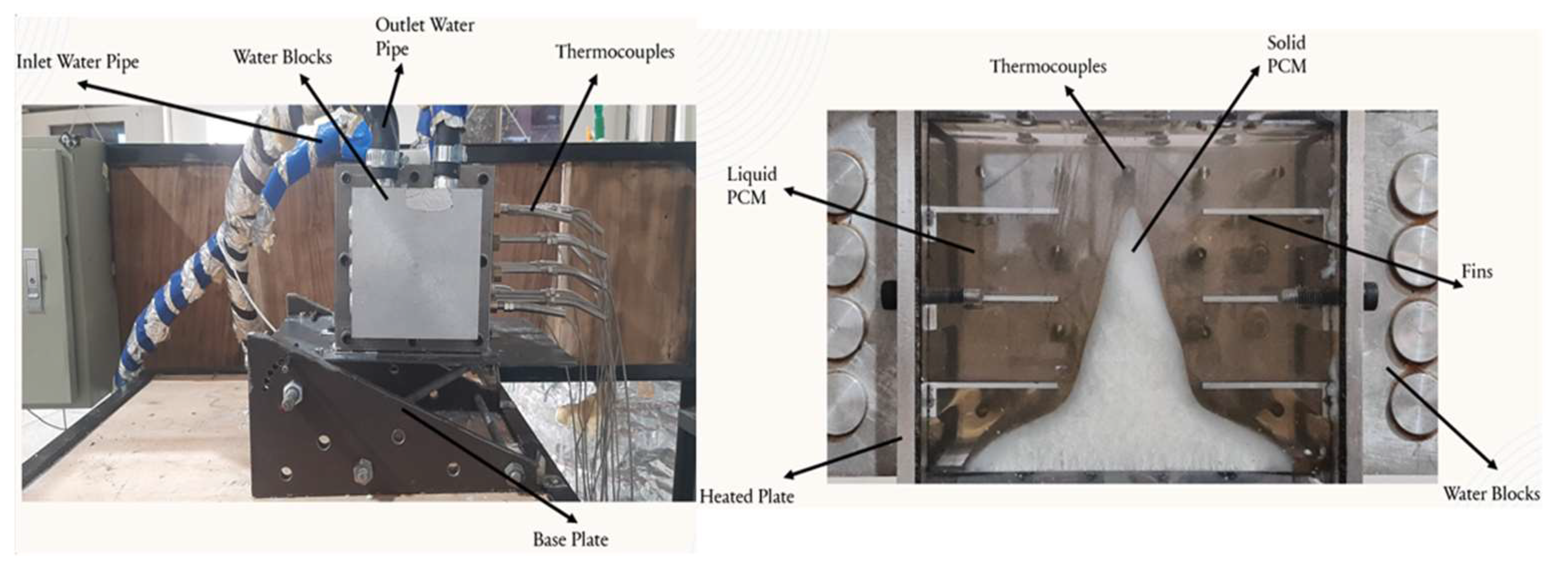
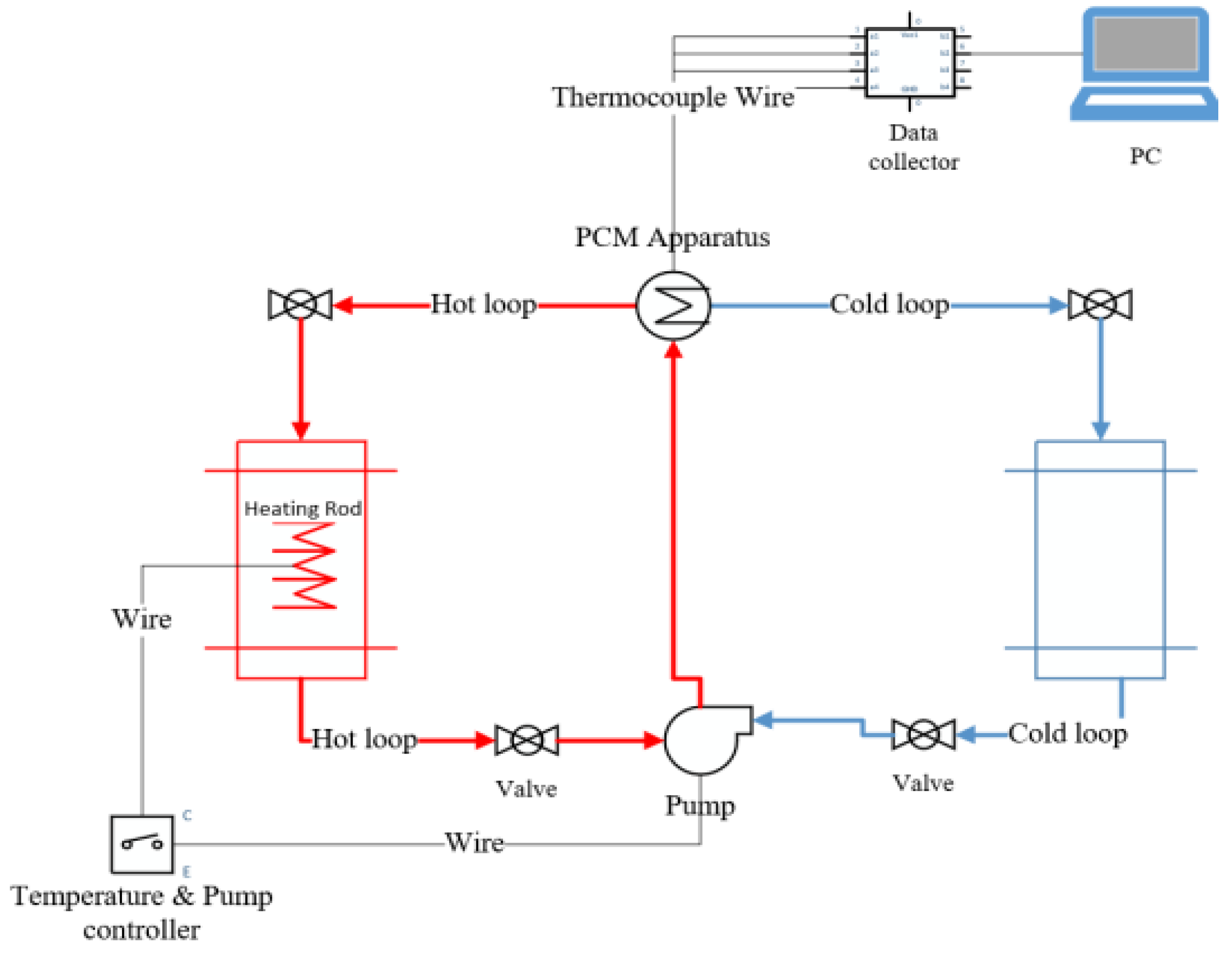
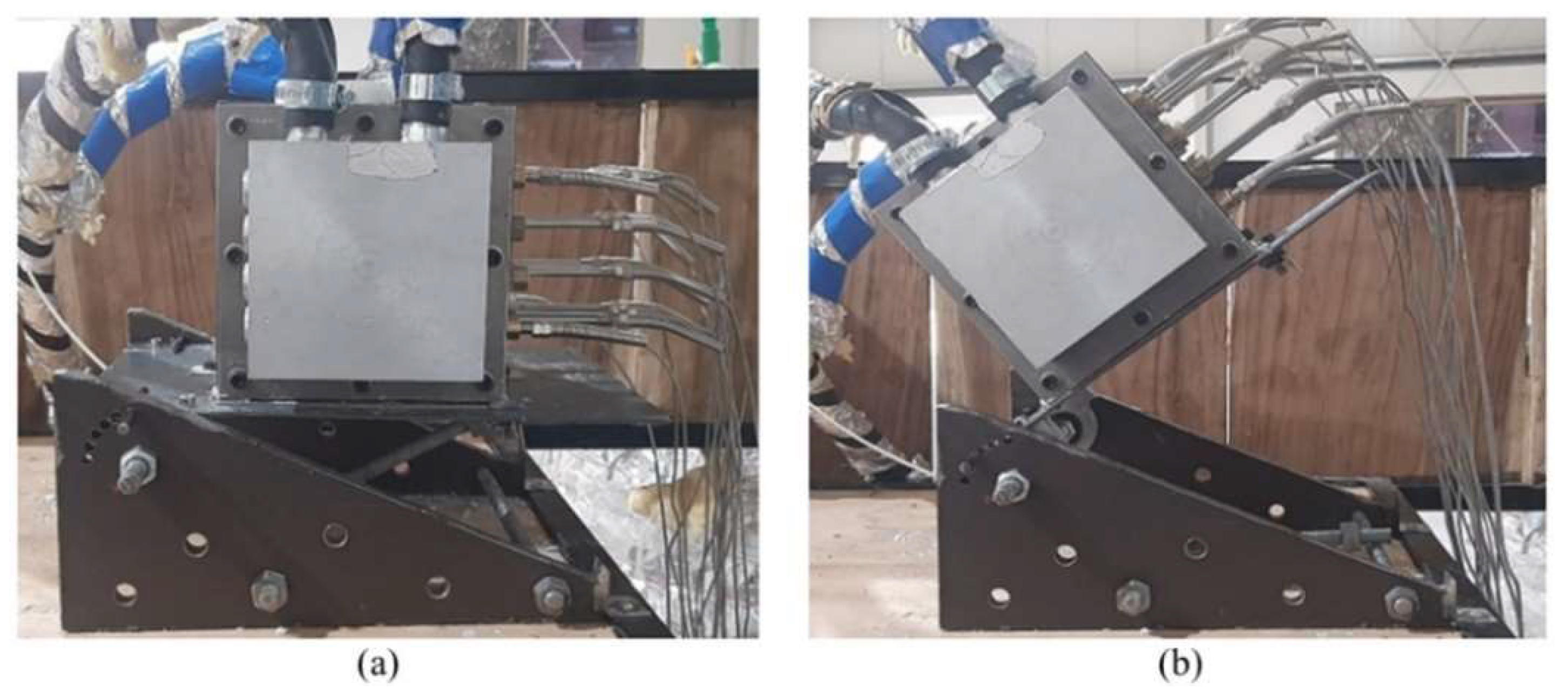
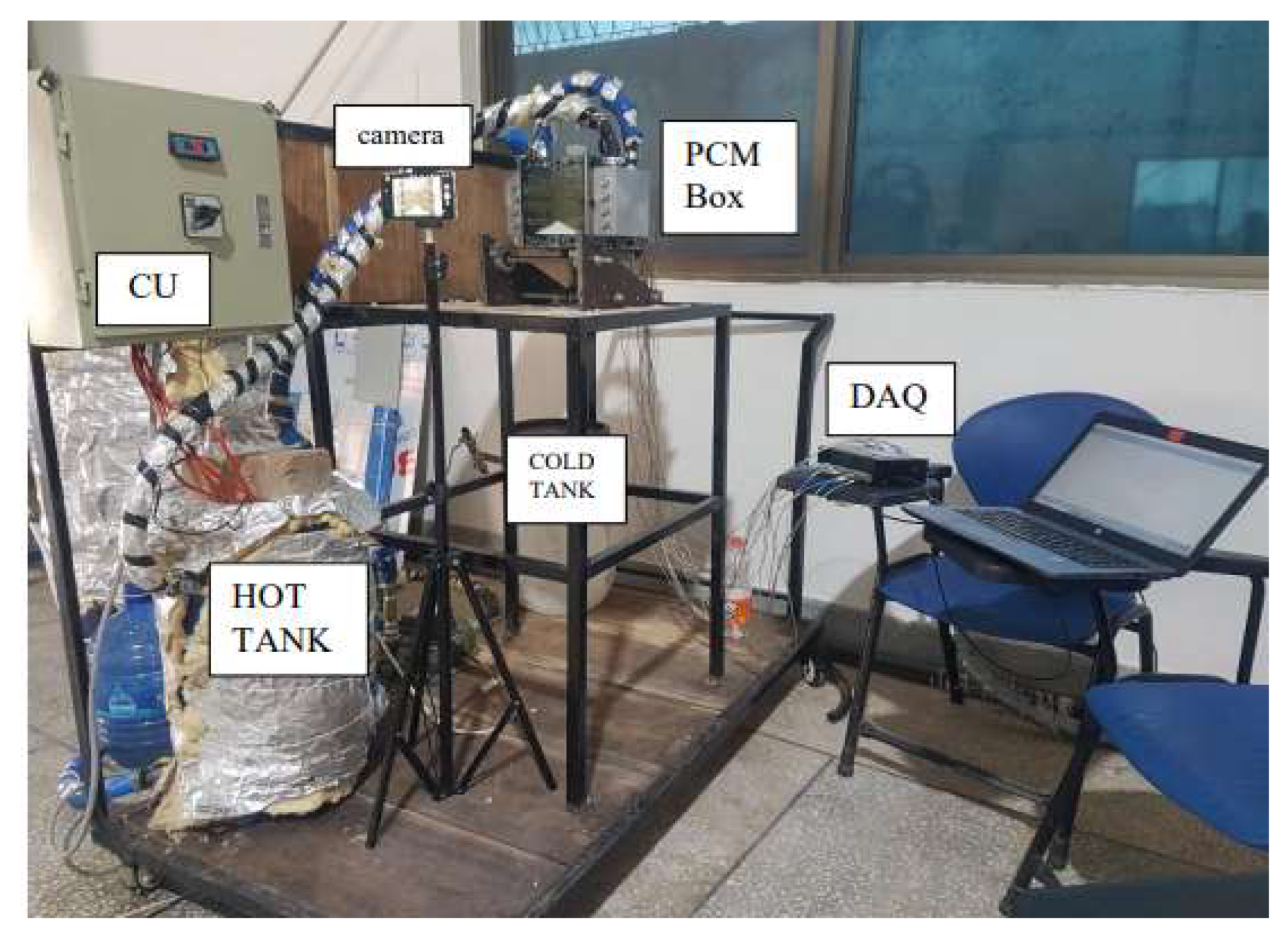
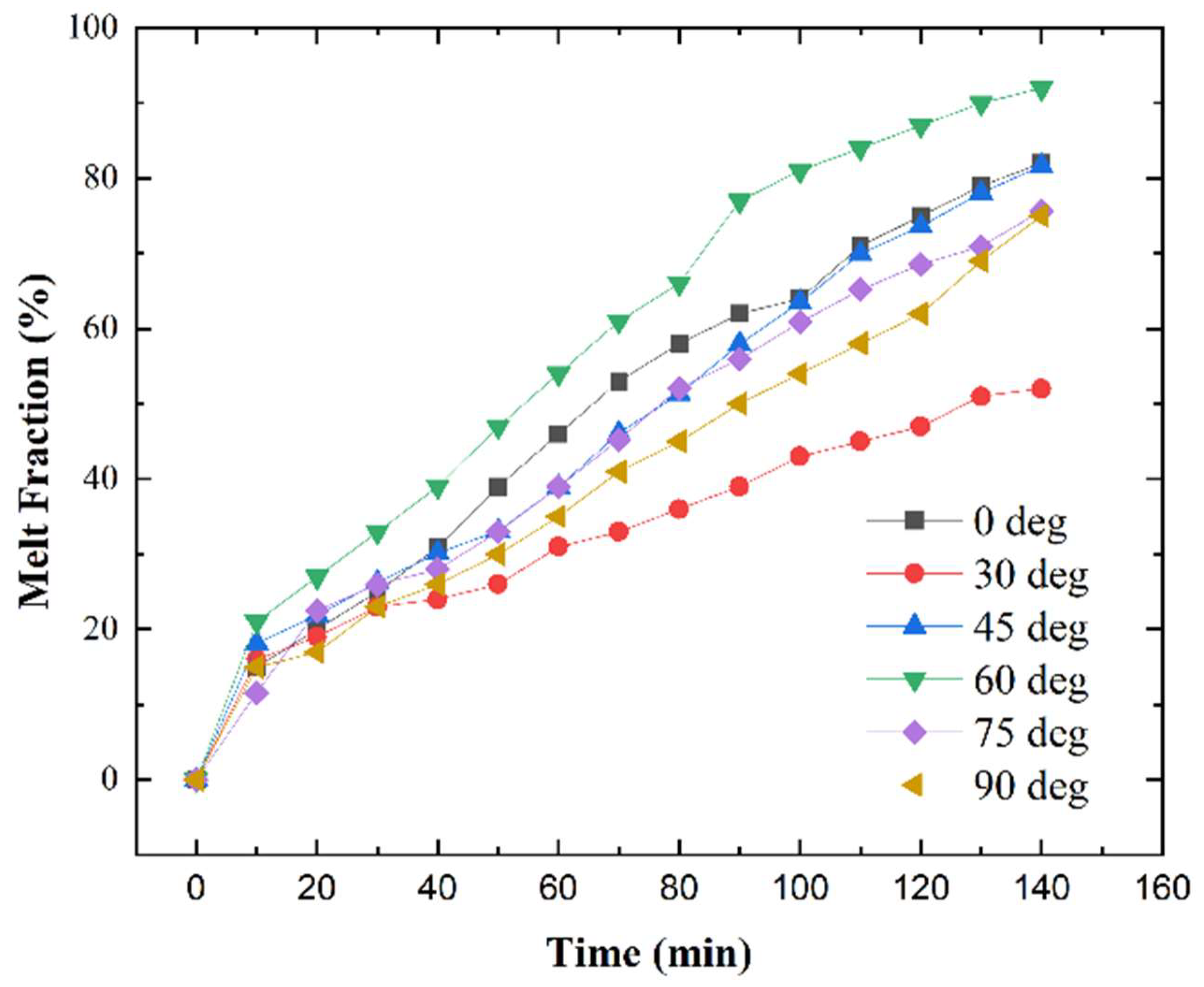

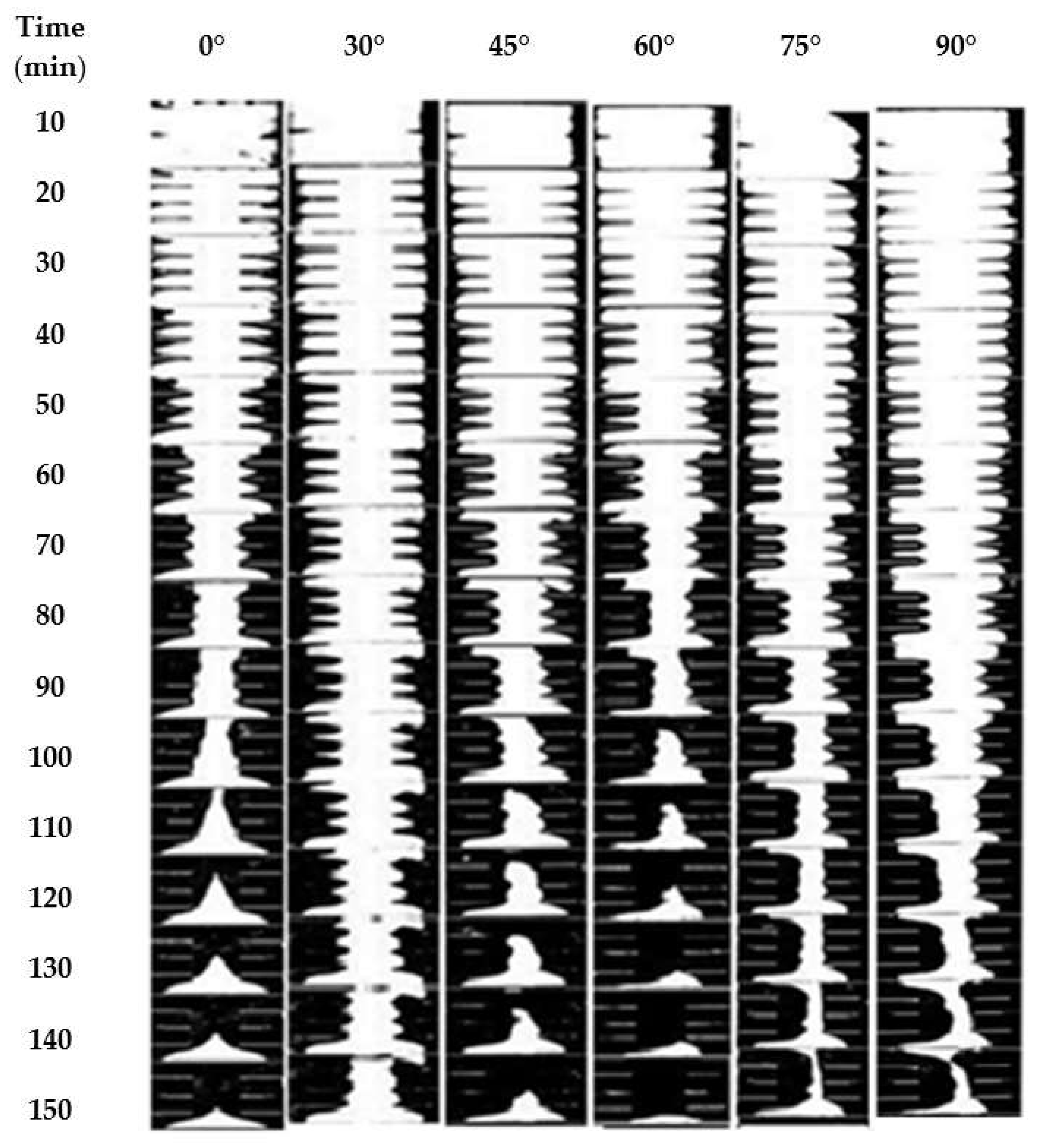
| Properies | Value |
|---|---|
| Thermal Conductivity, k () | 0.29 |
| Viscosity, µ (kg) | 0.0078 |
| Thermal Expansion Coefficient β () | 0.00081 |
| Temperature (Solidus, °C) | 54.5 |
| Temperature (Liquidus, °C) | 64.1 |
| Density of PCM solid | 1079 |
| Latent Heat of fusion | 186.5 |
| Specific Heat Capacity (Cp) (kJ/kg.K) | 2.605 |
Disclaimer/Publisher’s Note: The statements, opinions and data contained in all publications are solely those of the individual author(s) and contributor(s) and not of MDPI and/or the editor(s). MDPI and/or the editor(s) disclaim responsibility for any injury to people or property resulting from any ideas, methods, instructions or products referred to in the content. |
© 2024 by the authors. Licensee MDPI, Basel, Switzerland. This article is an open access article distributed under the terms and conditions of the Creative Commons Attribution (CC BY) license (https://creativecommons.org/licenses/by/4.0/).
Share and Cite
Huzaifa, M.; Ali, M.H.; Hashmi, M.T.; Ali, S.; Khan, M.M.; Shafiq, M.S. Melting Performance Enhancement of Latent Heat Thermal Energy Storage Unit by Changing the Angular Orientation. Eng. Proc. 2024, 75, 29. https://doi.org/10.3390/engproc2024075029
Huzaifa M, Ali MH, Hashmi MT, Ali S, Khan MM, Shafiq MS. Melting Performance Enhancement of Latent Heat Thermal Energy Storage Unit by Changing the Angular Orientation. Engineering Proceedings. 2024; 75(1):29. https://doi.org/10.3390/engproc2024075029
Chicago/Turabian StyleHuzaifa, Muhammad, Muhammad Haider Ali, Muhammad Taha Hashmi, Sarmad Ali, Muhammad Mahabat Khan, and Muhammad Shahid Shafiq. 2024. "Melting Performance Enhancement of Latent Heat Thermal Energy Storage Unit by Changing the Angular Orientation" Engineering Proceedings 75, no. 1: 29. https://doi.org/10.3390/engproc2024075029
APA StyleHuzaifa, M., Ali, M. H., Hashmi, M. T., Ali, S., Khan, M. M., & Shafiq, M. S. (2024). Melting Performance Enhancement of Latent Heat Thermal Energy Storage Unit by Changing the Angular Orientation. Engineering Proceedings, 75(1), 29. https://doi.org/10.3390/engproc2024075029






